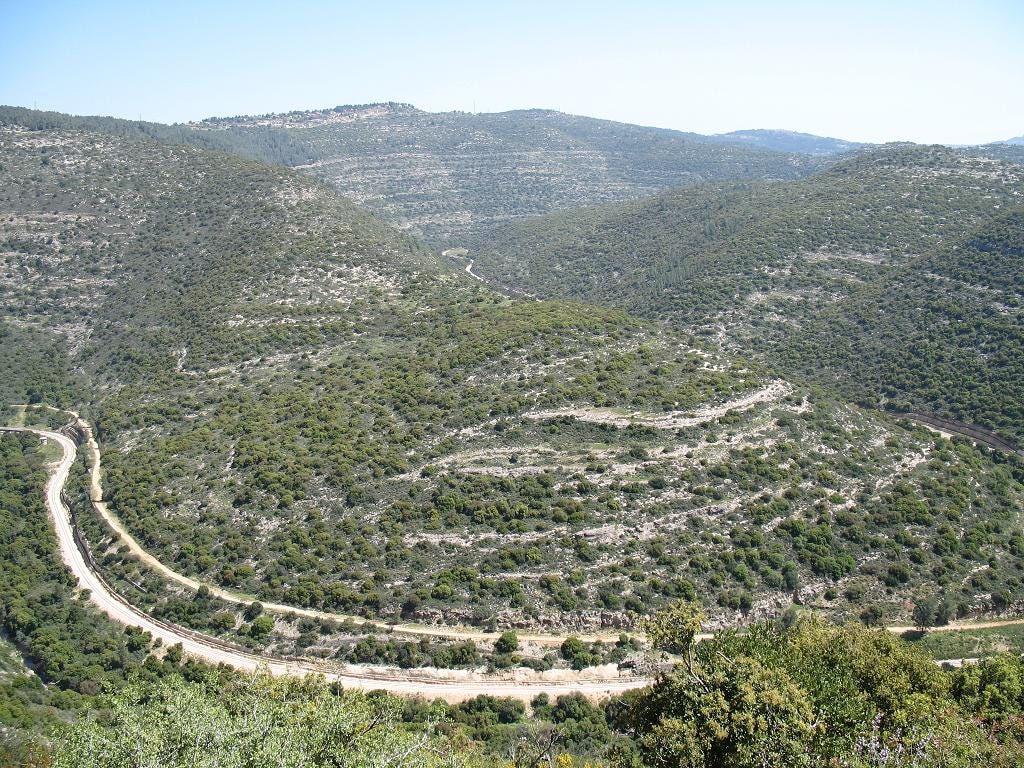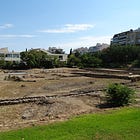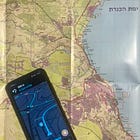The Wonders of Walking
Moderate-intensity exercise is not mediocre, but the heart of living well.
Dear Healthy Jew,
Last week I made a pitch for running. I stand by it.
Yet although running is one of the best ways to exercise, it is not the only one. Swimming, weightlifting, yoga, boxing, and many other workouts all come with their own unique advantages.
But today we’re going to survey one of our bodies’ elementary movements: plain old walking. I’m going to walk back (pardon the pun) my enthusiastic extolling of running to give walking the prominent place it deserves in a Healthy Jew’s life.
Let’s begin with a brief introduction to exercise physiology.
Light-intensity exercise is a slow stroll, like a family would take after dinner. Although research shows that any movement promotes health, most people will receive only limited benefits from slow walking. Important exceptions are people who need to stick to softer motion, whether because of illness, injury, or age. If you can’t do more, that’s a sure sign you don’t need to.
Moderate-intensity exercise would be a brisk walk, as if you’re a bit late for an appointment but if you go quick you’ll make it just on time. It’s still possible to carry on a conversation, but your body might prefer to just walk. This level of walking dramatically improves health in pretty much every area.
Vigorous-intensity exercise means running. Don’t get caught up with pace; what matters is that you’re moving fast in a way that works for you. (More on this another time.) There are clear signs of this level: it’s hard to talk a lot, you clearly feel your heart beating away, and you are strongly aware of dwelling in exertion.
It might seem that serious exercise is of the vigorous variety, and anything less is for those who can’t or won’t. The words “moderate-intensity” smack of mediocrity, conjuring up a guilt-ridden, lazy walk in the park in place of getting out and running for real. But the truth is that just walking, when practiced briskly, firmly places a person on the road to health, much in the same way as running.
What separates the brisk walk and run from the slow stroll? In a word, heartrate. The heart of living well is to get our hearts ticking away.
When we dwell in exertion, our lungs and heart work harder to pump oxygenated blood to every nook and cranny. As with all muscles, the more we work them, the stronger and more efficient they become. Cardiovascular strength and efficiency then trigger a cascade of wondrous effects throughout the body. A stronger heart needs to pump fewer times per minute to get the same results, so resting heart rate lowers, which reduces stress of body and mind. Research also shows that better blood flow boosts and balances both the nervous system and immune system, which is how regular exercise helps – sometimes even cures – most psychological conditions, and is the reason that fit people get sick so much less.
Brisk walking and running both significantly raise heartrate, so we can be confident they are excellent workouts. They differ in how close they push the heart to its maximum rate, a number that can be estimated by subtracting your age from 220. Wearable heartrate monitors, such as Fitbit or Apple watches, can be helpful to track the shift from mid-intensity to high-intensity, but aren’t essential. (I bought my first Fitbit only several months ago.)
Some people in the know claim the difference between brisk walking and running is mostly efficiency: by raising intensity, you get more bang for your buck. Others say that research shows added benefits from high intensity workouts. Either way, everyone agrees that walking is the foundation of healthful movement.
That’s also been my experience. Around a decade ago, during a prolonged non-health-related crisis (sorry, not telling), a man I much respect recommended that I make a Plan for Survival and follow it. One of the plan’s linchpins, at his suggestion, was a half-hour brisk walk, every single day. I’ll never forget those first few weeks: my thighs felt they would fall off, but I was strangely happier and more energetic than ever. So I kept at it, and my body adapted and strengthened, pulling along my mind and spirit.
After a few years of walking, I took up running, which is another saga. For now, I’ll just note that although running significantly improved my wellbeing, the added benefit was vastly smaller than my initial entrance into regular exercise.
Considering the central role that walking plays in every terrestrial animal’s life - and even some marine ones, such as penguins - this all isn’t very surprising. We walk to find food and friendship, and walk to avoid danger and discomfort. About half our body’s height is devoted to the cause. At every level of metaphor, we talk of “walking through life” and “ways of life.” Jewish sources galore dub man “the walker” because we don’t remain static but move and grow.
Here lies the power of walking: it’s not just another workout, but the heart of living well. Most jobs nowadays don’t require much physical strength. And nobody lifts dumbbells or crunches squats as part of everyday living. But everyone walks. What separates the boys from the men is how often and how far.
Do you take the elevator or the stairs up to the third floor? Do you walk or drive to work, shop, pick up the kids? If you consider the time invested in getting in the car, sitting in traffic, and then finding parking – all meaningless activities for our bodies – walking often doesn’t take much longer than driving. And when walking does take time, it’s a secure investment that returns with compound interest in health, productivity, and happiness.
Over the years, lots of brisk walking has made me into a briskly walking person. I barely drive for errands in the neighborhood, preferring to walk ten or fifteen minutes each way, often several times a day. When I have work or errands in Jerusalem, I usually take the bus into the city, and then walk wherever I need to go. Just yesterday I went there to attend a conference, buy a book, meet a friend, and give a lecture. By the time I got home, Fitbit had clocked 9.3 miles for the day.
Once I even walked home from Jerusalem to Bet Shemesh. The twenty-five-mile excursion involved a full day of hiking through stunning nature along the Sorek Stream, including a detour into the hills to avoid a forest fire. (The firemen were kind enough to share some freezing water from their cooler.) Unfortunately, time restraints preclude me from walking home every day, but I made the point to myself.

One last point. Although walking extends far beyond the formal practice, an amorphous decision to walk often doesn’t stick. As with many healthful practices, it’s crucial to dig strong foundations from which beautiful habits can rise. A twenty or thirty minute daily brisk walk is a good way to start, preferably at the same time each day. Incorporating walking into your daily routine – walking to work, for example – might be helpful, because that gives walking concrete parameters. But consider the drawback: what happens when you’re on vacation, or for some other reason lose your external framework? Therefore, it might be better just to walk, with nowhere specific to go. To each his own.
One Suggestion: Walk. Whether you’re new to formal exercise or a marathon runner, become a walker. If you don’t already exercise regularly, consider taking a brisk daily walk, working up to thirty minutes. Either way, if you care to, walk through life. Don’t just ride along.
For a fascinating historical addendum to this article, see here:
Also read more about how to become a walker in these two posts:
Thank you for reading Healthy Jew.
Here are 2 great paths to continue the journey:
Also check out this intro and index to explore hundreds of posts about our 3 Healthy Jew topics: Wellness with Wisdom, Land of Life (Israel), and Sensible Spirituality.
Finally, always feel free to reach out here with any comments, questions, or complaints:
I look forward to hearing from you!
Be well,
Rabbi Shmuel Chaim Naiman
Please note: All content published on Healthy Jew is for informational and educational purposes only. Talk to a qualified professional before taking any action or substance that you read about here.












